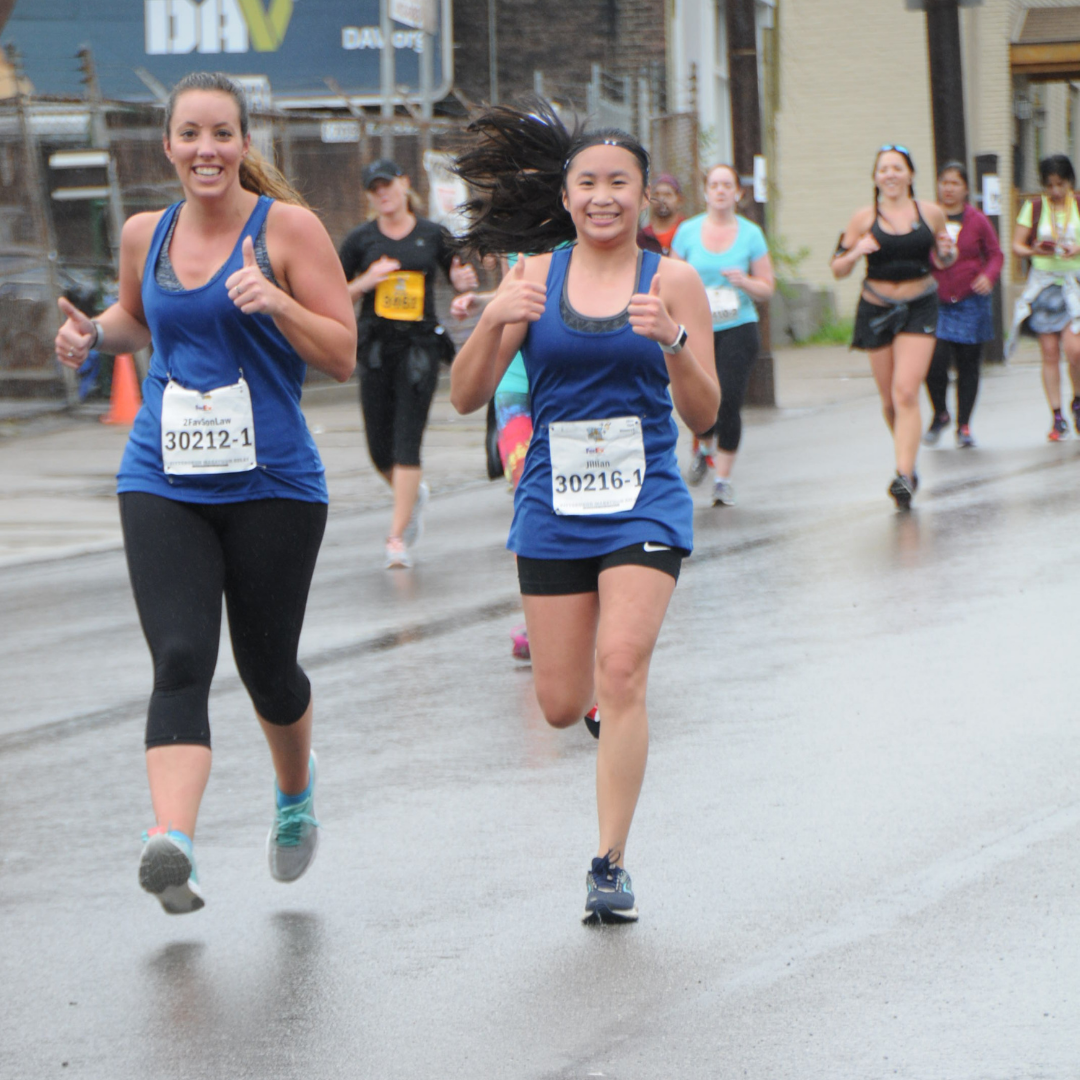


Learning Your Running Lingo
Just like any sport, running has its very own language. Some of the vocabulary and terms that are used by runners might be hard to decode by those who are new to the sport. Don't worry though, this blog will explain the most popular running terms that you need to know!
Cool Down: Similar to a warm-up, but done AFTER your workout. A cool-down consists of light jogging and stretching to help return your body to its original state gradually.
Dynamic Stretching: This type of stretching is movement based as opposed to stretching while standing still or sitting. Dynamic stretches are a great way to warm up prior to a workout or run. Some examples of dynamic stretches are high knees, jumping jacks, and skater hops. Click Here for an example of a quick and effective dynamic warm-up.
Fartlek: Swedish for “Speed Play.” A fartlek workout is a continuous run where you alternate running at a fast pace with a moderate pace for a set period of time or distance. Example: 12 minute Fartlek run. Start by running at a fast pace for 1 minute, followed by running at a moderate pace for 1 minute. Then at a fast pace for 2 minutes, followed by a moderate pace for 2 minutes. Finally run at a fast pace for 3 minutes, followed by moderate pace for 3 minutes.
Interval Workouts: A running workout consisting of running for a short and intense period, followed by a rest/recovery period, typically of an equal amount of time. Example: Run 400 meters, light jog for 400 meters. Repeat 4 times.
Kick: A “Kick” is a term that describes increasing your speed during the final stretch of your race.
Pace: Your pace is how long it takes you to cover a certain distance. If you run 2 miles in 16 minutes then you are running at an 8 minute mile pace. This can be used for any distance.
PR: Short for “Personal Record.” You may also hear people say PB which stands for “Personal Best.”
Recovery Run: These are shorter runs typically at an easier pace that are done 24-48 hours after a big workout or race. Recovery runs are designed to help your body rest and recharge before your next workout.
Splits: Splits are used to break down your race into smaller increments. Example: I ran 2 miles in 20 minutes. My first mile “split” was 11 minutes, my second mile “split” was 9 minutes. A similar term commonly used is “Negative Split.” A negative split is when you run faster in the 2nd half of your race compared to the 1st half.
Static Stretching: This type of stretching is done in a still position. Often involves holding a certain position for a set period of time. Static stretching is great for increasing your flexibility. Example: Reaching down and touching your toes for 20 seconds.
Striders: A great way to warm up or cool down before or after a workout or race. Striders involve running for about 100 meters or 15-20 seconds at a fast pace and progressively getting faster as you go. The beginning of your strider should be a quick jog pace. As you run continue to pick up speed so that by the end you are sprinting. These are designed to activate your fast-twitch muscles and get you ready to run.
Taper: Refers to reducing your mileage and intensity of your training in the final days before a big race. This will ensure that your body is fully rested and recovered, and ready to go on race day!
Tempo Run: Also known as “Threshold Runs”, these runs are long runs that are run at just above your comfortable pace. It should be a challenge to hold the pace, but not overly hard. This type of workout helps you simulate a race day feeling and is great for improving your endurance.
Warm-Up: Preparing your body for a workout or run of any kind. This can involve light jogging, stretching, or anything that increases your heart rate and activates your muscles.
Popular Race Lengths:
5k – 3.1 miles
10k – 6.2 miles
Half Marathon – 13.1 miles
Marathon – 26.2 miles
We hope this helps you on your path to becoming a Runner of STEEL!
- John Cotton; Youth Program Services Coordinator